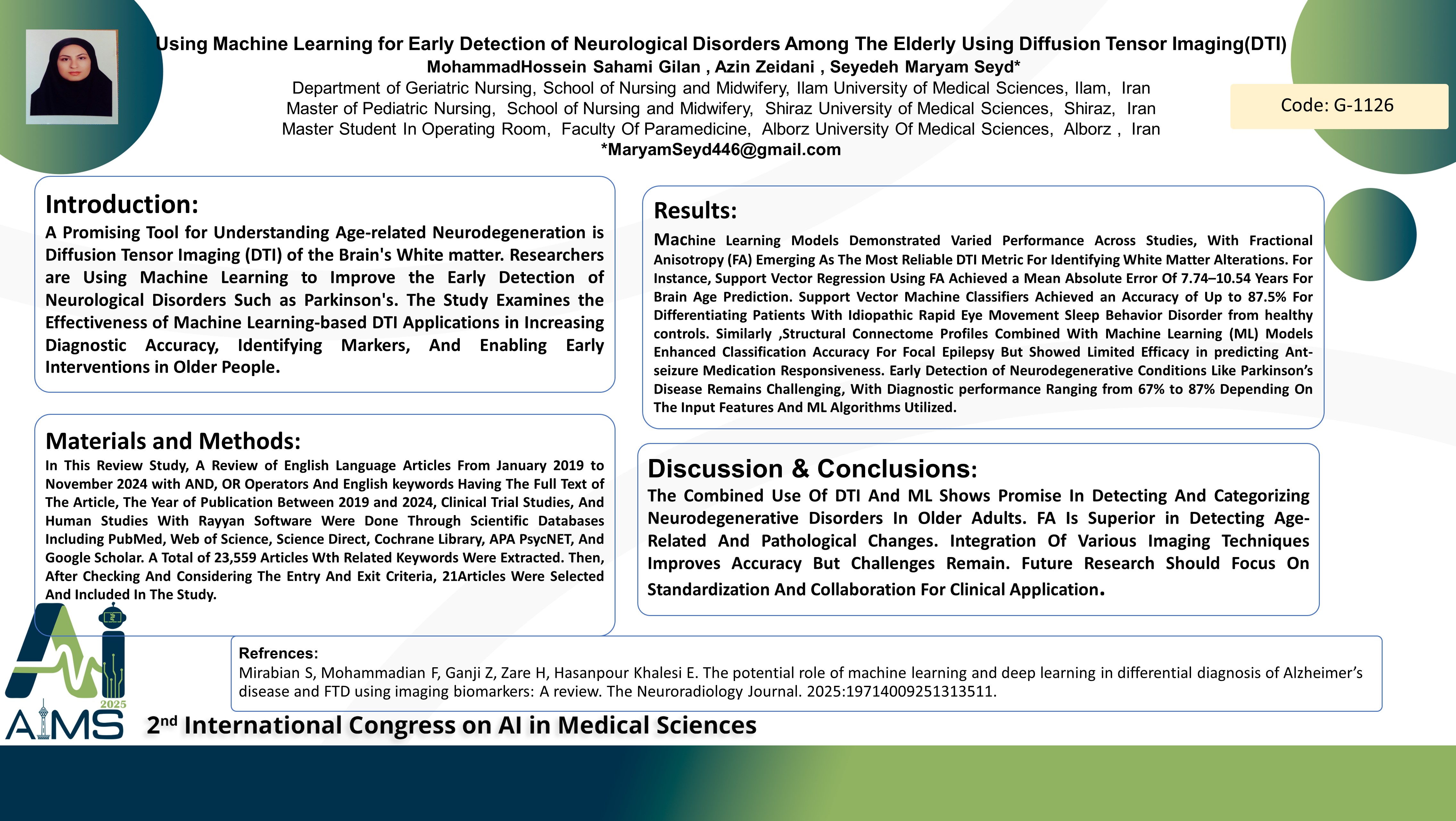: Leveraging Machine Learning for Early Detection of Neurodegenerative Disorders Among the Elderly Using Diffusion Tensor Imaging (DTI).
Code: G-1126
Authors: MohammadHossein Sahami Gilan, Azin Zeidani, Seyed Maryam Seyd * ℗
Schedule: Not Scheduled!
Tag: Clinical Decision Support System
Download: Download Poster
Abstract:
Abstract
background and aim: A promising tool for understanding age-related neurodegeneration is diffusion tensor imaging (DTI) of the brain's white matter. Researchers are using machine learning to improve the early detection of neurological disorders such as Parkinson's. The study examines the effectiveness of machine learning-based DTI applications in increasing diagnostic accuracy, identifying markers, and enabling early interventions in older people. method: In this review study, a review of English language articles from January 2019 to November 2024 with AND, OR operators and English keywords Having the full text of the article, the year of publication between 2019 and 2024, Clinical trial studies, and Human studies with Rayyan software were done through scientific databases including PubMed, Web of Science, Science Direct, Cochrane Library, APA PsycNET, and Google Scholar. A total of 23,559 articles with related keywords were extracted. Then, after checking and considering the entry and exit criteria, 21 articles were selected and included in the study. result: Machine learning models demonstrated varied performance across studies, with Fractional Anisotropy (FA) emerging as the most reliable DTI metric for identifying white matter alterations. For instance, support vector regression using FA achieved a mean absolute error of 7.74–10.54 years for brain age prediction. Support Vector Machine classifiers achieved an accuracy of up to 87.5% for differentiating patients with idiopathic Rapid Eye Movement Sleep Behavior Disorder from healthy controls. Similarly, structural connectome profiles combined with Machine Learning (ML) models enhanced classification accuracy for focal epilepsy but showed limited efficacy in predicting Ant-seizure Medication responsiveness. Early detection of neurodegenerative conditions like Parkinson’s Disease remains challenging, with diagnostic performance ranging from 67% to 87% depending on the input features and ML algorithms utilized. conclusion: the combined use of DTI and ML shows promise in detecting and categorizing neurodegenerative disorders in older adults. FA is superior in detecting age-related and pathological changes. Integration of various imaging techniques improves accuracy but challenges remain. Future research should focus on standardization and collaboration for clinical application.
Keywords
Machine Learning, Diffusion Tensor Imaging, Neurodegenerative
